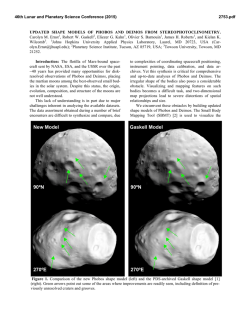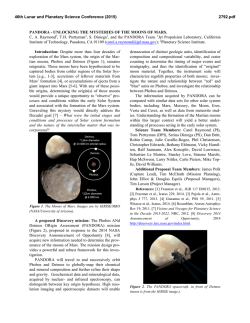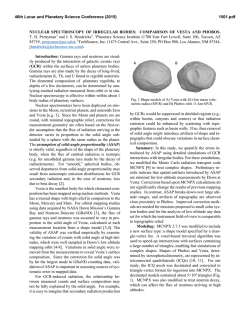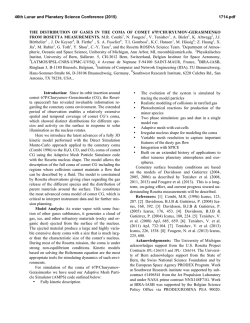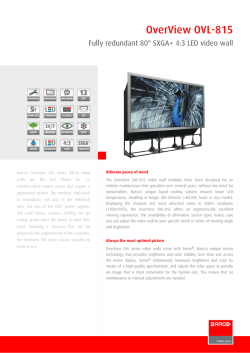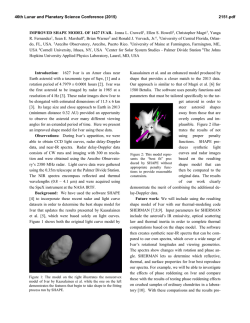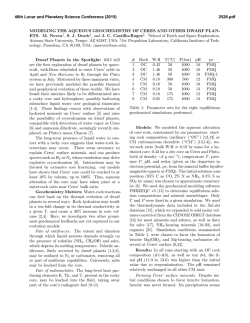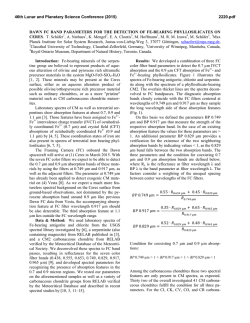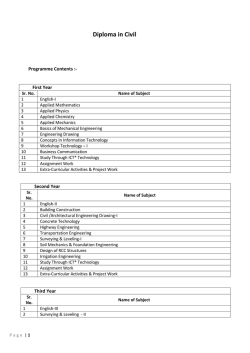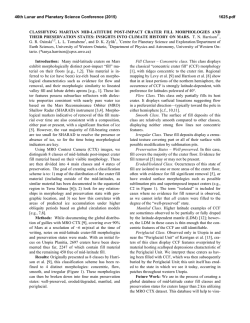
ASTEROID CARTOGRAPHY: MAPPING VERY ELONGATED
46th Lunar and Planetary Science Conference (2015) 1018.pdf ASTEROID CARTOGRAPHY: MAPPING VERY ELONGATED OBJECTS. P. J. Stooke1, 1Department of Geography and Centre for Planetary Science and Exploration, The University of Western Ontario, London, Ontario, Canada N6A5C2, [email protected], http://publish.uwo.ca/~pjstooke/. Introduction: Cartography of non-spherical worlds began with Phobos and Deimos, imaged by Mariner 9 in 1971-72. The first map of any nonspherical world was a chart of Phobos by Tom Duxbury [1]. Since then many objects far more elongated than Phobos have been imaged and some have been mapped, but the development of mapping methods for these objects is still in its infancy. I describe work in this area and illustrate it with recent maps of Eros, Ida, Itokawa and comet Borrelly. Mapping: Data sources vary considerably: Borrelly is covered by only a few images, sufficient for a simple shape model and low resolution coverage of 30% of the surface, Toutatis by effectively one visual image (Chang’E 2) plus a radar shape model. At the other extreme is Eros with over 170,000 images giving global high resolution coverage and both laser altimetry and an image-derived shape. From a shape model, a coordinate system can be defined and at that point the surface can be mapped into any desired map projection analytically or via a large number of control points (features or grid intersections). The process just described works perfectly for a spherical world, but as shapes depart from a sphere the last step, the map projection, can cause difficulties which become more pronounced for extreme shapes including very elongated objects. A variety of map projections have been devised to use with nonspherical objects, e.g. [2], [3], [4]. Which work best for very elongated objects? Note that other approaches are also possible, including 3-D visualizations which can be overlaid with multiple data sets and viewed from any direction in specialized GIS settings, but this study is concerned only with flat maps suitable for use in hardcopy or presentation slide formats. Map Projections: The most common global map projection in the small body literature is Simple Cylindrical (SC), sometimes replaced by Mercator with two polar insets (e.g. [1]). SC is easy to understand, and particularly valuable as an image database or archive format from which any other projection or rendered visualization might be derived. (Sinusoidal projections contain the same information in a smaller file (less redundancy at high latitudes) and enjoyed a brief popularity when computer memory was limited.) SC distorts polar regions of a sphere but shows low latitudes very well, but on very elongated objects the equatorial region suffers large variations in scale and significant shape distortions. Bugaevsky [5] alleviated this by expanding grid cells at the ends of the body, which works well for Phobos but perhaps less well for very elongated objects. Further experiments with this method on progressively more complex shapes would be desirable. Multiple Orthographic views are also common, typically six viewed from mutually orthogonal directions [6]. They are easy to interpret but lack the inherent simplicity and continuity of a single global map and the capability of easy reprojection. The Morphographic approach [7] is explored here in a particular variant: projecting the irregular shape onto a best-fit or similar triaxial ellipsoid which is then flattened into two opposite half-body maps (north and south, or 90° and 270° longitude if 0° is at one end). The projection duplicates the expansion of grid cells at the ends of the body, providing half-body maps which are easy to relate to images, something often very difficult to do with cylindrical maps. Figure 1 shows samples of these maps for Eros, Ida, Itokawa and comet Borrelly. Borrelly’s map control is derived from [8]. In each case the elongated bodies have been projected onto a generic elongated grid (morphographic azimuthal equidistant) originally scaled to suit Eros, but used here for convenience with several bodies having similar axial ratios. This is not the only approach which might be used for highly elongated objects. Planetocentric coordinates might be abandoned in favour of a cylindrical coordinate system with a long axis coinciding with that of the ellipsoid. Two coordinates, distance along the axis and azimuth around it, would define positions. The ends might be mapped onto plane or hemispheric caps and portrayed in insets, as polar insets are used with Mercator projections [1]. References: [1] Duxbury, T. Icarus 23.2 (1974): 290-299. [2] Snyder Survey Review 28.217 (1985): 130-148. [3] Nyrtsov, M. V. and Stooke, P. J. Proc. Int. Conf. InterCarto. Vol. 8. 2002. [4] Berthoud, M. G. Icarus 175.2 (2005): 382-389. [5] Bugaevsky, L. M. 5th Int. Conf. Mars, Pasadena, CA. 1999. [6] Hudson, S. et al., 2003. Icarus, 161, 346-355. [7] Stooke, P. J., 1998. Canadian Geographer, 42, 61-78. [8] Howington-Kraus, E. et al., 2002. Int. Arch. Photogramm. Remote Sens., XXXIV(4), # 277. 46th Lunar and Planetary Science Conference (2015) 1018.pdf Figure 1. Maps of 4 small bodies in a Morphographic Equidistant projection on an elongated ellipsoid base
© Copyright 2025
